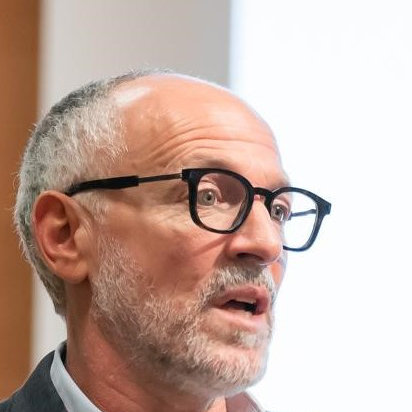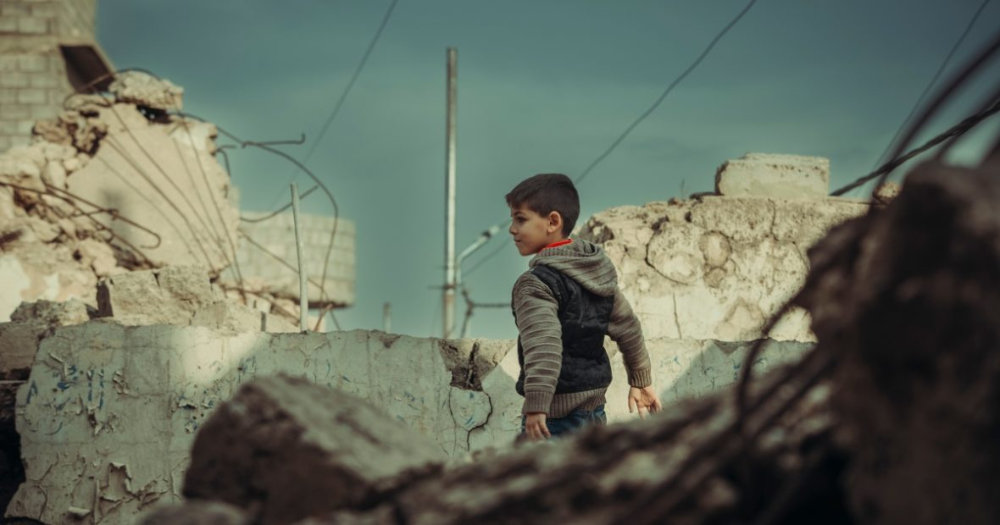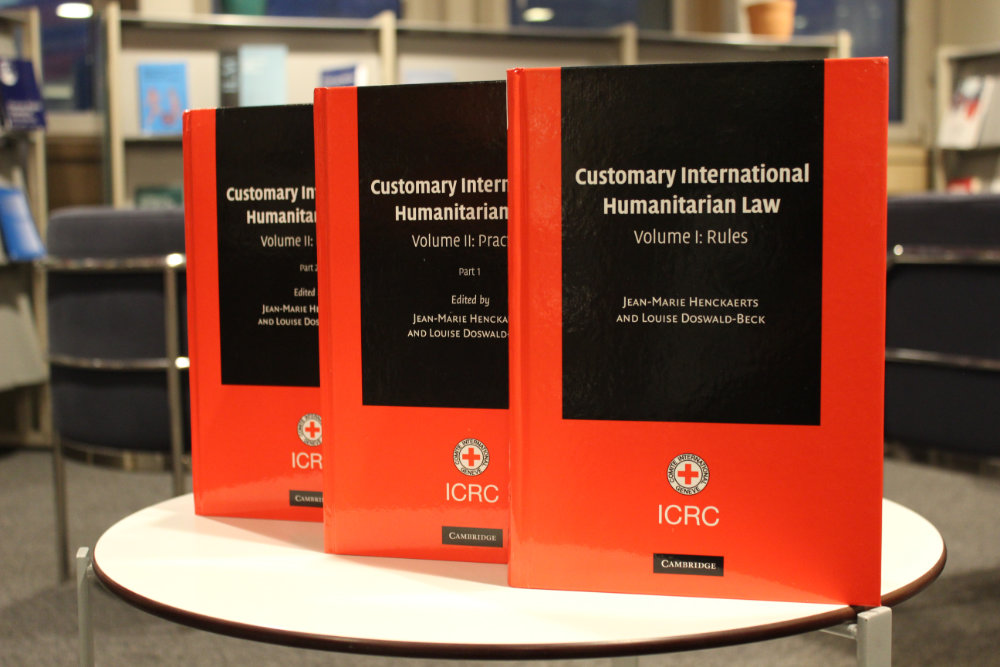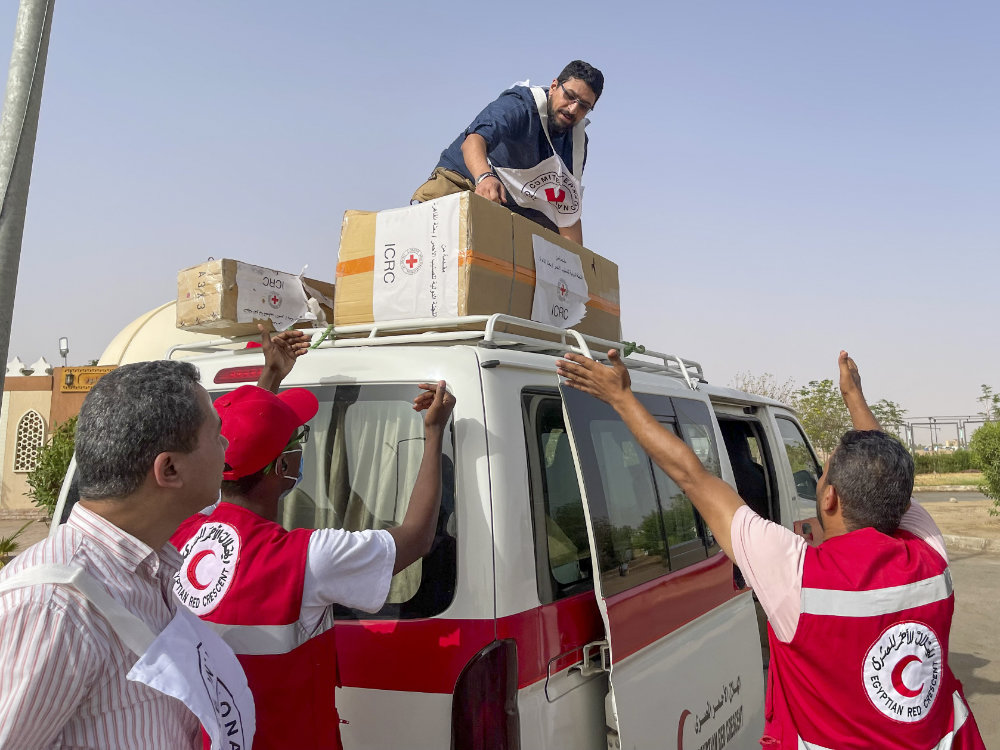As public opinion is critical in shaping decision-making during armed conflict, engaging with and informing youth and the broader public about international humanitarian law (IHL) is essential for ensuring compliance with the law and promoting accountability. IHL education – both formal and non-formal – is key to this endeavor. Engagement across all generations and audiences – both military and civilian – is important to ensure a broad and enduring understanding of the goals of IHL and ultimately contribute to prevent and reduce suffering in armed conflict through an informed and motivated public. With over 42% of the global population under the age of 25, young people are especially critical to these efforts.
In this post, Etienne Kuster, Catherine Gribbin, Jonathan Somer, Thomas Harper and Charlotte Tocchio share insights from IHL educators and IHL experts around the world on how IHL education needs further investment in order to build a universal culture of compliance.
The current political landscape is increasingly marked by pronounced polarization, the dehumanization of affected populations, and disenchantment with IHL. This challenging environment necessitates a renewed commitment from IHL educators worldwide, encouraged and supported by States Parties to the Geneva Conventions and members of the International Movement of the Red Cross and Red Crescent, who have legal obligations and statutory responsibilities to disseminate IHL and build a universal culture of compliance.
Within the framework of the 34th International Conference’s theme of “building a universal culture of compliance with IHL,” IHL education was discussed at a side event co-hosted by the International Committee of the Red Cross (ICRC), the International Federation of Red Cross and Red Crescent Societies (IFRC), the American Red Cross (ARC), the Canadian Red Cross (CRC) and the Danish Red Cross (DRC), with the support of the Swiss Department of Foreign Affairs (FDFA). Led by a keynote address from Canada’s highest ranking military legal officer, the Judge Advocate General, Brigadier General Holman, the panel brought together speakers from the ICRC, the European National Societies Legal Support Group (ELSG), the Addis Ababa IHL Clinic in Ethiopia, and the Chinese Red Cross’ Humanitarian Academy to share ideas and expertise on how education in international humanitarian law, principles and values, is a cornerstone to build a universal culture of compliance.
Through testimonies, visuals, and discussion, centred on evidence, innovation and good practices, the speakers shared their experiences on the breadth of impact IHL education has on compliance. This included promoting a universal culture of compliance with IHL by adopting innovative education approaches, engaging broad audiences and effectively addressing dehumanization and disenchantment.
We must now collectively build on our global expertise to galvanize further energy and attention towards IHL education and its role in furthering implementation and compliance with IHL: our times are in dire need of it.
Figure 1. “The Power of IHL Education: Voices from the Field” was a short film shared at the 34th International Conference IHL education side event, sharing powerful testimonials from all over the world.
Dehumanization and disenchantment: the plight of people in contemporary armed conflict
Often rooted in disinformation and misinformation, dehumanization of the perceived ‘enemy’ fighters or civilian population, be it in official or private discourses, is a highly worrying trend. Such dehumanization can lead to a disregard of certain harm or overly permissive interpretations of IHL, which are in turn used to justify unwarranted destruction and killing.
IHL is designed to protect those who do not take part in hostilities (anymore) and to limit the means and methods of warfare. When IHL is not applied faithfully by some, the perception of “double standards” brings about disenchantment with the law. Such disenchantment is especially worrisome when it affects those who are responsible for teaching IHL as well as those who must learn about IHL, from authorities and armed forces to students.
By teaching such audiences, IHL educators play a key role to shape an environment conducive to respect for the law. Ultimately, it is the people affected by armed conflict who pay the heaviest price of disenchantment, as it undermines the obligation for all to comply with the law in all circumstances. It also helps spread the incorrect impression that disrespect for IHL may be the “new normal”.
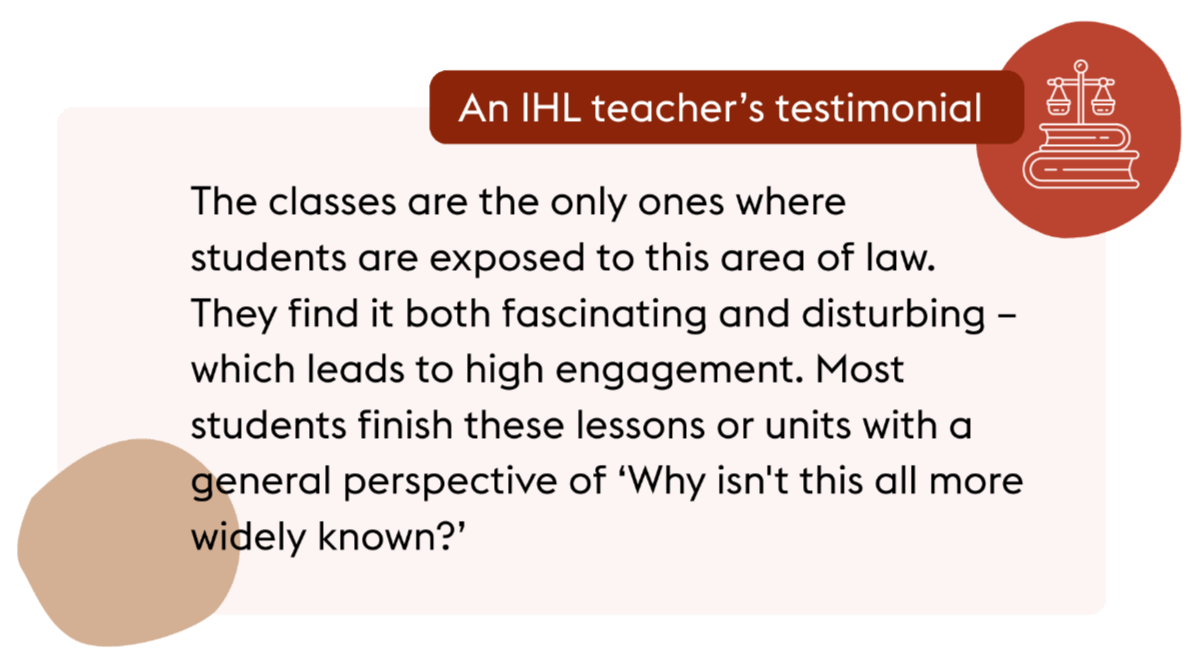
Towards a universal culture of compliance, powered by IHL education
Faced with those challenges, the 34th International Conference of the Red Cross and Red Crescent adopted Resolution 1, entitled “Building a universal culture of compliance with international humanitarian law”. Paragraph 9 of this Resolution reads as follows:
The 34th International Conference of the Red Cross and Red Crescent, […] calls upon National Societies, with the support of the IFRC and ICRC, to further disseminate IHL and the Movement’s humanitarian ideals – as anchored in the Fundamental Principles – in formal and informal education and to the public at large, and encourages States, and specifically educational authorities, to engage with National Societies to integrate these subjects into formal curricula or learning objectives, beginning with primary education, as appropriate; […]
On this basis, how can IHL education address dehumanization and disenchantment and contribute to a global culture of compliance with IHL? Here are three pillars we recommend IHL education “2.0” builds upon to ensure it is up to the task:
1. Impactful: IHL education 2.0 must integrate impact surveys, give room to audiences, and be seen as long-term community commitment.
In general, prevention is more cost-effective, saves more lives and is more impactful than remedial action in the long-term. When it comes to prevention of IHL violations through creating an environment conducive to respect for the law, the impact of such work is often overshadowed by the gravity of blatant and gruesome violations of IHL, as reported in the media.
Nevertheless, the preventative impact of IHL education can and should be measured, not only to ensure continued quality improvement, but also to highlight its vital contribution to saving lives.
An interesting example of how the impact of IHL education can be measured stems from the Jean-Pictet Competition in IHL. Since 1989, this yearly worldwide event has equipped over 4,500 students with practice-based IHL knowledge that has advanced not only their professional pursuits in advancing compliance and protection, but also IHL promotion and implementation worldwide. The last impact survey of the Jean-Pictet Competition shows that practice-based, empathetic IHL education empowers students to become professionals who contribute to better IHL implementation.

Figure 2. Summary of the latest impact survey of the Jean-Pictet Competition in IHL conducted by the ICRC (2023).
The impact of IHL education can also be measured through attitude-change surveys among any given audience before and after undergoing a course. As a good practice, it is recommended that IHL educators consistently assess their programmes. The outcomes of IHL education assessments, if positive (as found in most cases), can also help re-enchant IHL teachers and help reinforce IHL education endeavours.
Another good practice for impact is to have IHL educators belonging to the same age range as their audiences, as demonstrated by the engaging youth-led IHL campaigns organized by the American Red Cross.
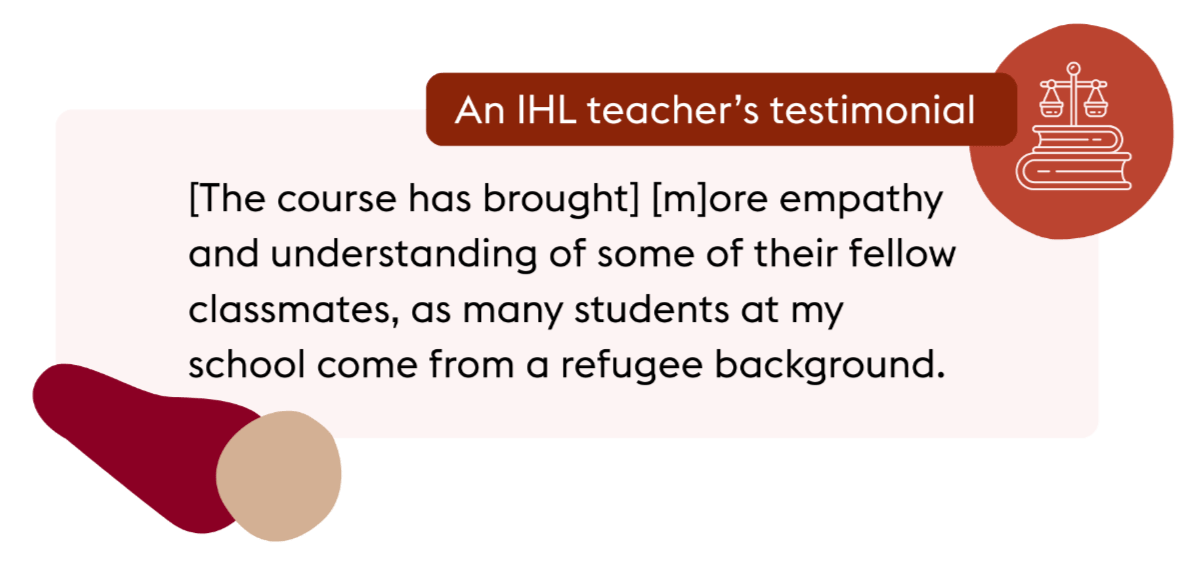
In terms of duration, impactful IHL education must represent long-term investment that can translate into formal integration of IHL into schools and universities’ curricula, but also in informal education programmes such as Red Cross/Red Crescent campaigns or targeted training. IHL education will also be more impactful if supported by a worldwide community of professionals (re)committed to it, sharing and working together.
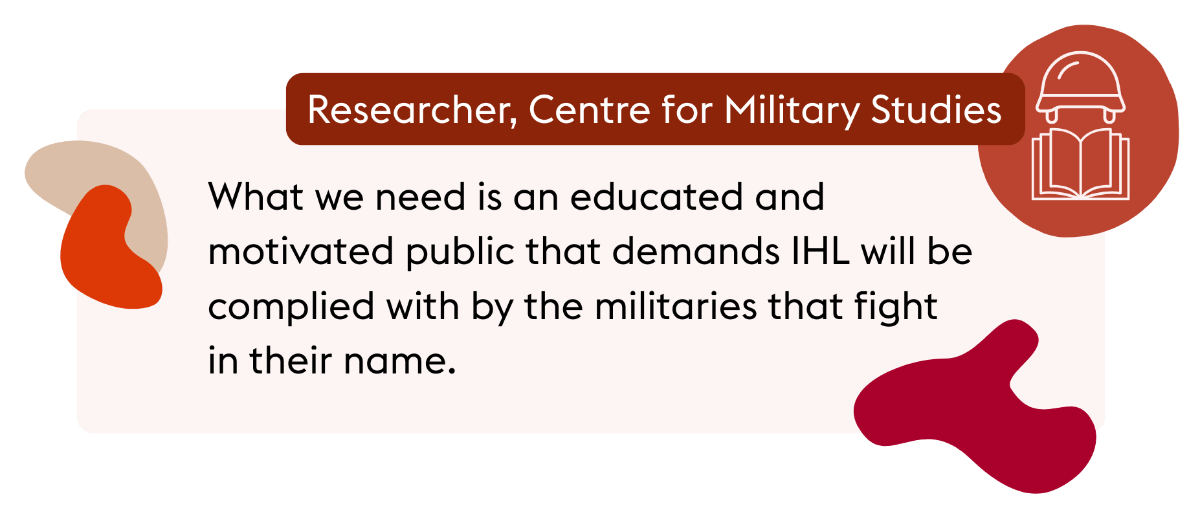
2. Empathetic: IHL education 2.0 must impart knowledge not only on rules, but also on why and how they matter to people affected by armed conflict
IHL education without an empathetic approach risks turning it away from the letter and spirit of the law. Empathetic IHL education is essential for learners to internalize the rules, appreciate their importance and the requirements to apply them. It allows learners to see the human face of conflict, by connecting with the lived experiences of affected people – their fears of being displaced, trauma of losing loved ones, feelings of wounded combatants, and hardships of living in a war zone – and to understand the real-life impact of these rules.
Educating people about IHL through the eyes of those affected – building upon real stories, case studies, and testimonials – makes the rules more relatable and actionable. Such holistic educational approaches and immersive learning experiences – as used in the IFRC Youth as Agents of Behavioural Change (YABC) initiative and the ICRC Exploring Humanitarian Law (EHL) programme – help learners feel a sense of urgency and personal responsibility, motivating them to advocate for IHL compliance and enforcement.
Without the tools or outlets for proper reflection, many of us, students included, feel ineffective and despondent. Thus, we must collectively (re)commit to create an educational experience that becomes a call to action, moving IHL and the humanitarian principles and values from being a mere technical subject to a transformative force that preserves humanity in armed conflict.
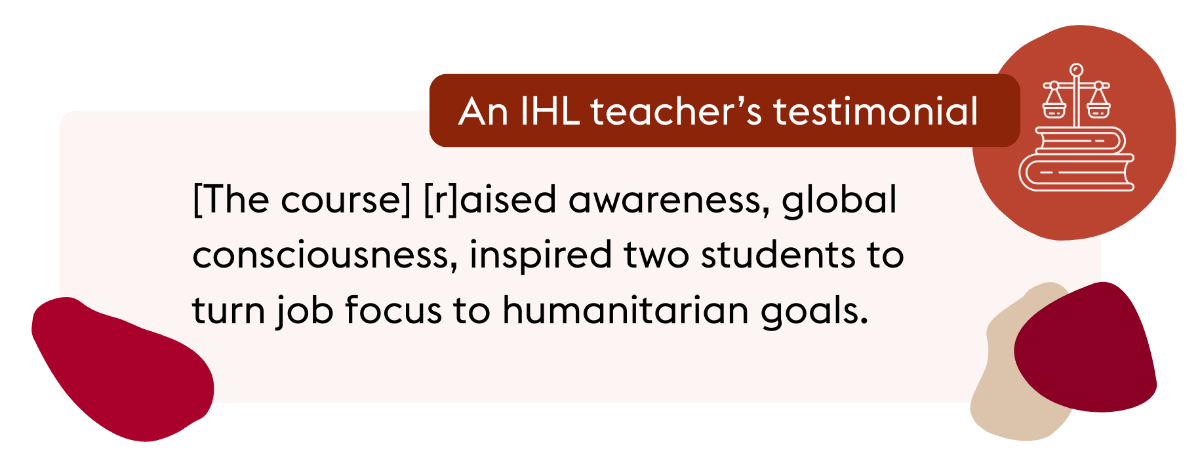
3. Innovative: IHL education 2.0 must explore evidence-based tools to encourage empathy and agency, including through the use of digital technology
The way a message is communicated can be as important as the content itself. Research demonstrates that immersive learning tools are more effective in influencing human behaviour than advocacy campaigns. For example, evidence shows that the use of gaming methods in classrooms produces higher learning gains than mere simulations, while at the same time, there is a connection between immersive learning and empathy. The 33rd International Conference ‘Bringing IHL Home Resolution’ encouraged the development of innovative digitalized methods for IHL education.
To this end, and based on the evidence, RCRC Movement partners[i] teamed up with the goal of using immersivity and gamification to guide the public in strong empathetic narratives, where the user can experience how – as a result of individual choices – IHL makes a difference. The result, If War Comes to You, is a choose-your-own path, first-person POV film that can be experienced as a civilian, a soldier or an aid worker, to see how the choices they make can reduce suffering in war. More than a film, the experience contains pop out and other interactive elements that allow the user to dig deeper into IHL themes. Available in ten languages, it also includes a gamified ‘call to action,’ where the user is prompted to provide a ‘tweet’ in support of #limitstowar, the youth IHL advocacy group portrayed in the film.
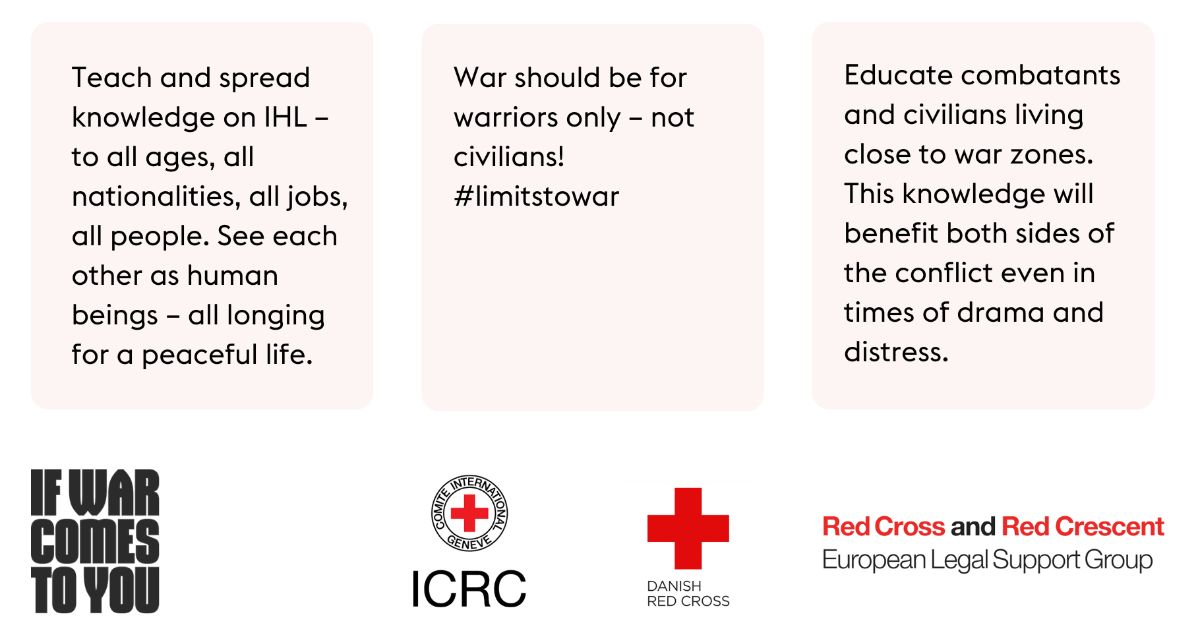
Figure 3. User input to #limitstowar call to action.
If War Comes to You has been honoured by the communication and change industry with a range of awards, including in the “purpose driven communication” and “digital experience” categories, beating out savvy corporate communicators such as Mercedes and Porsche.
But a high-performance vehicle is of little use idling in the garage. Innovation in IHL education requires new processes and partnerships to maximize uptake by the target audience. For example, Danish Red Cross has tapped into promotional outlets of the gaming industry, with live online sessions run on the streaming platforms of popular (and appropriate) gaming influencers. Here, the gamers run through the experience, with commentary, while viewers are engaged through chat functions.
The International Conference Resolution referenced above also opens the door for National Societies to work with national authorities towards integrating IHL into school curricula. With If War Comes to You, they can provide an innovative award-winning and student-friendly means by which to do so.
Conclusion: a call to action to all those responsible for decisions, planning and implementation of education, including states, the Movement and IHL educators
As stated by Nelson Mandela, “Education is the most powerful weapon you can use to change the world.” In order to affect change towards an increasingly legally compliant, informed and motivated public, IHL education plays a key role and ultimately contributes towards building a culture of global compliance with IHL.
We call on representatives of governments, civil society, the RCRC Movement and all IHL educators at large to (re)commit to IHL education, through a renewed “2.0” approach. This renewed approach seeks and measures impact, empathizes and innovates by teaching not only the rules, but also why and how they matter to people affected by armed conflicts.
There is an incredible network of dedicated practitioners in this field. We need to support one another and nurture IHL education efforts around the world. While IHL education alone cannot bring compliance, we must endeavor to do all that we can to contribute towards it. Our education efforts must be done by empowering audiences to contribute to IHL compliance, as future IHL professionals or as citizens demanding it from their governments.
Today’s challenges, including perceived “double standards”, make this renewed approach to IHL education not only a wish, but a must. We owe it to all people suffering from dehumanizing and disenchanting rhetoric, as well as IHL violations, and, as we all share humanity, to humankind as a whole.
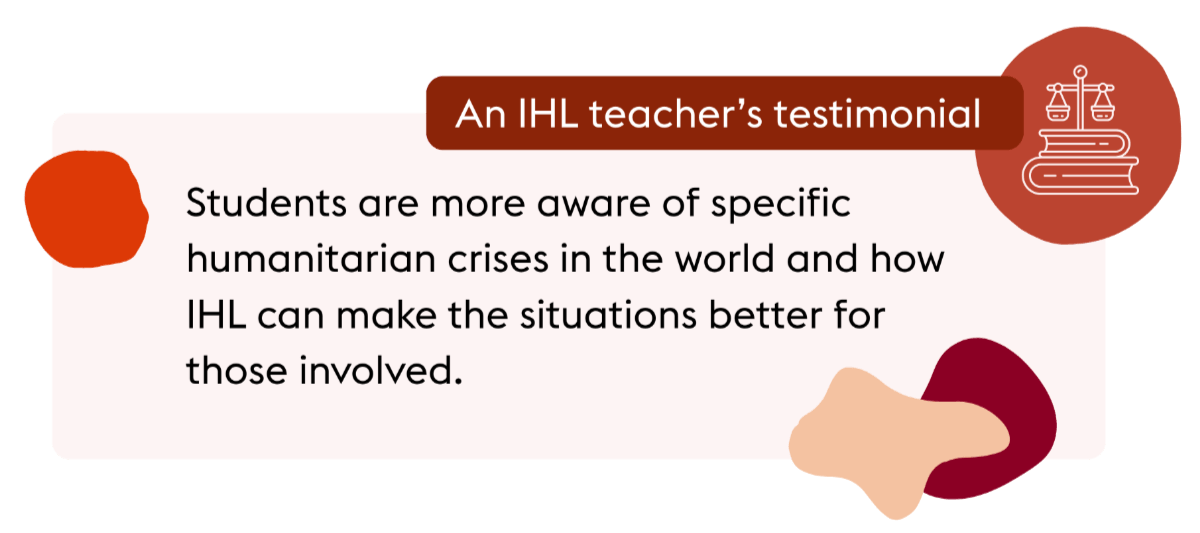
References
[i] Red Cross and Red Crescent European Legal Support Group, ICRC and Danish Red Cross.
See also:
- Marina Sharpe, If you teach it, they’ll enroll: IHL education in Canadian law schools, December 17, 2024
- Natalie Deffenbaugh, De-dehumanization: practicing humanity, June 27, 2024
- Andrew Bell, Can IHL training influence military conduct in war?, May 7, 2024
- Elizabeth Rushing, Michel Anglade, and Mark Chapple, Protecting education from attack during armed conflict, September 13, 2023
- Moamin Aljaro, Online education: teaching IHL in the Gaza Strip during the COVID-19 pandemic, July 15, 2021
- Etienne Kuster & George Dvaladze, Why educating students on humanitarian norms and values matters, July 29, 2016




